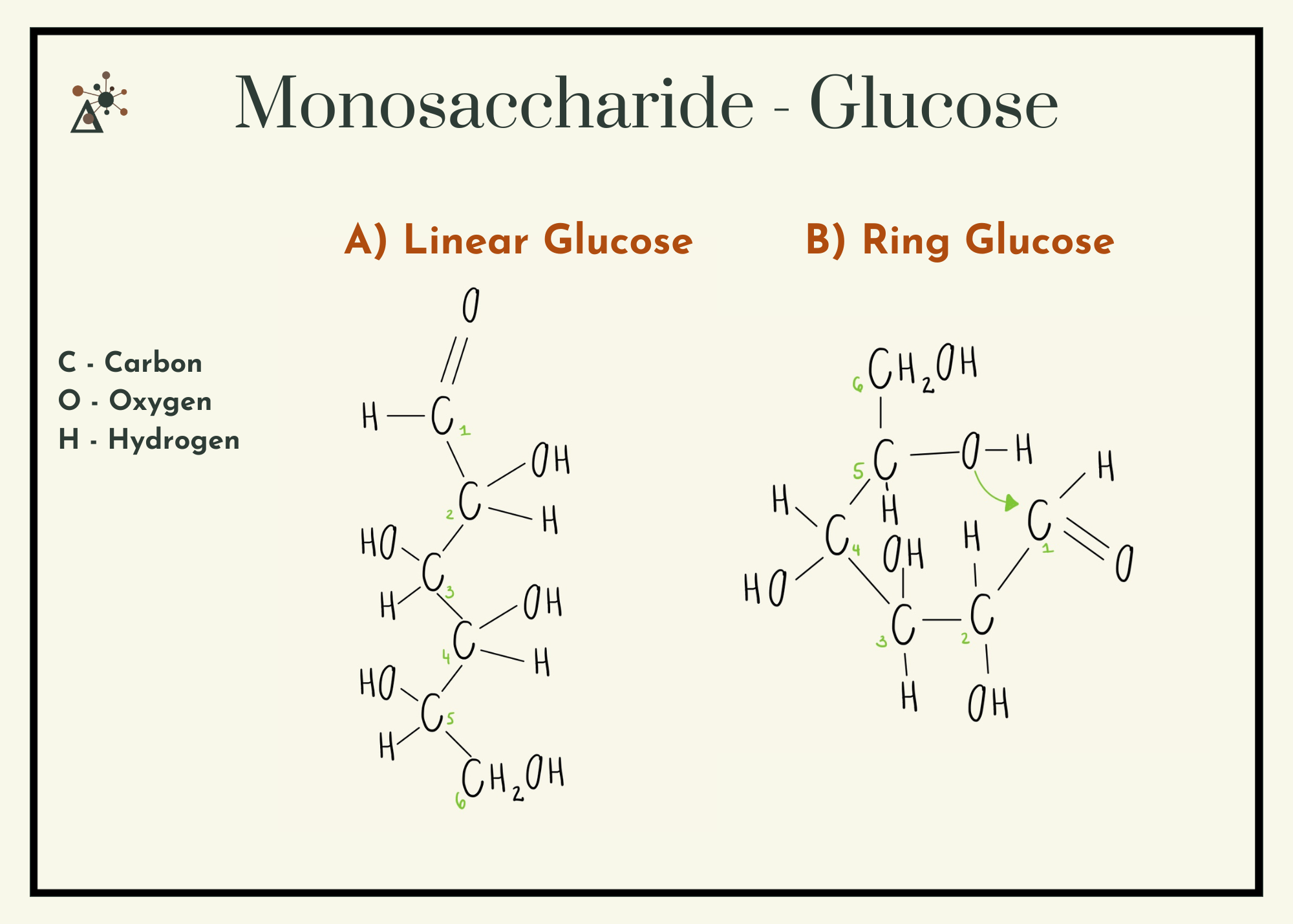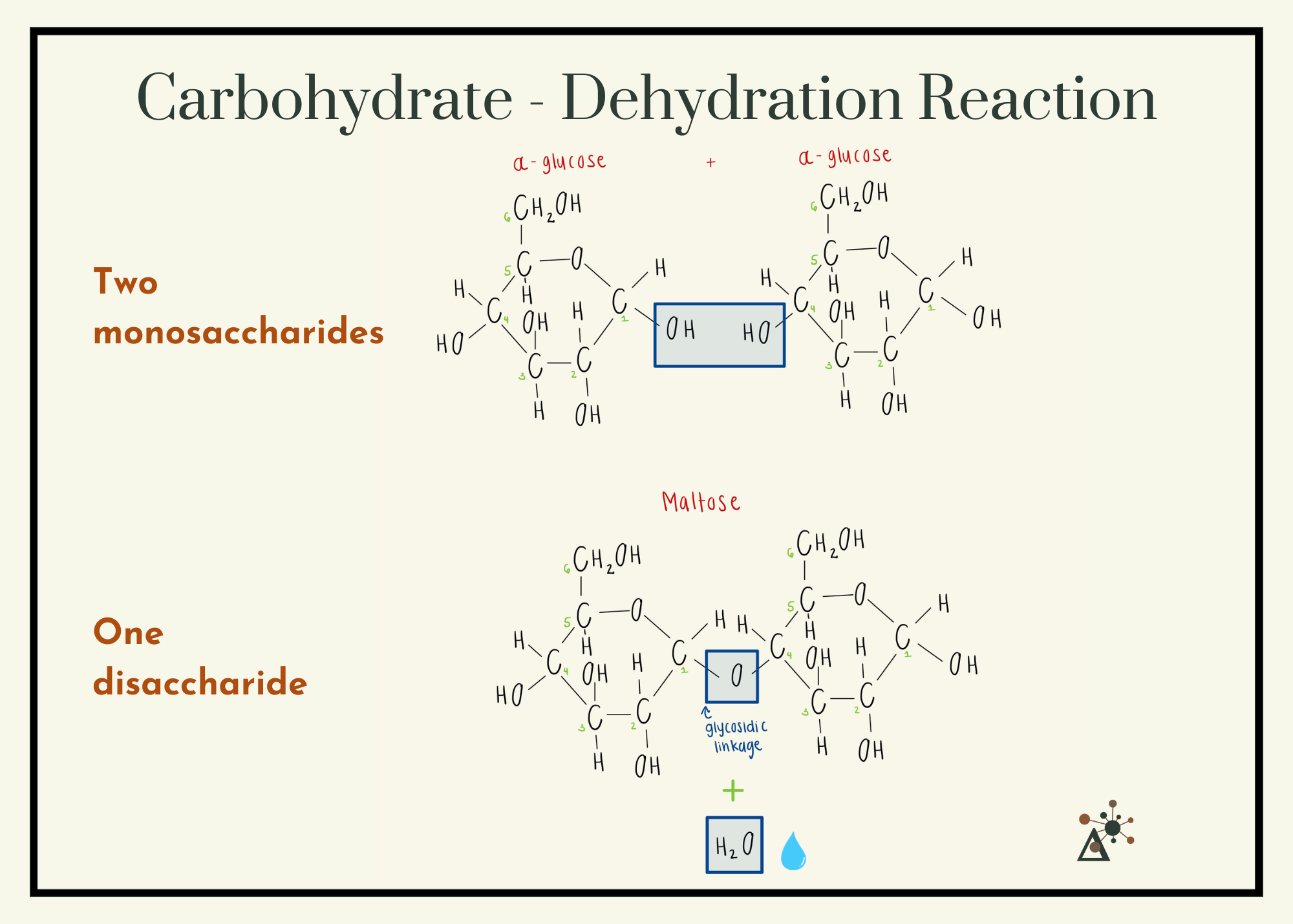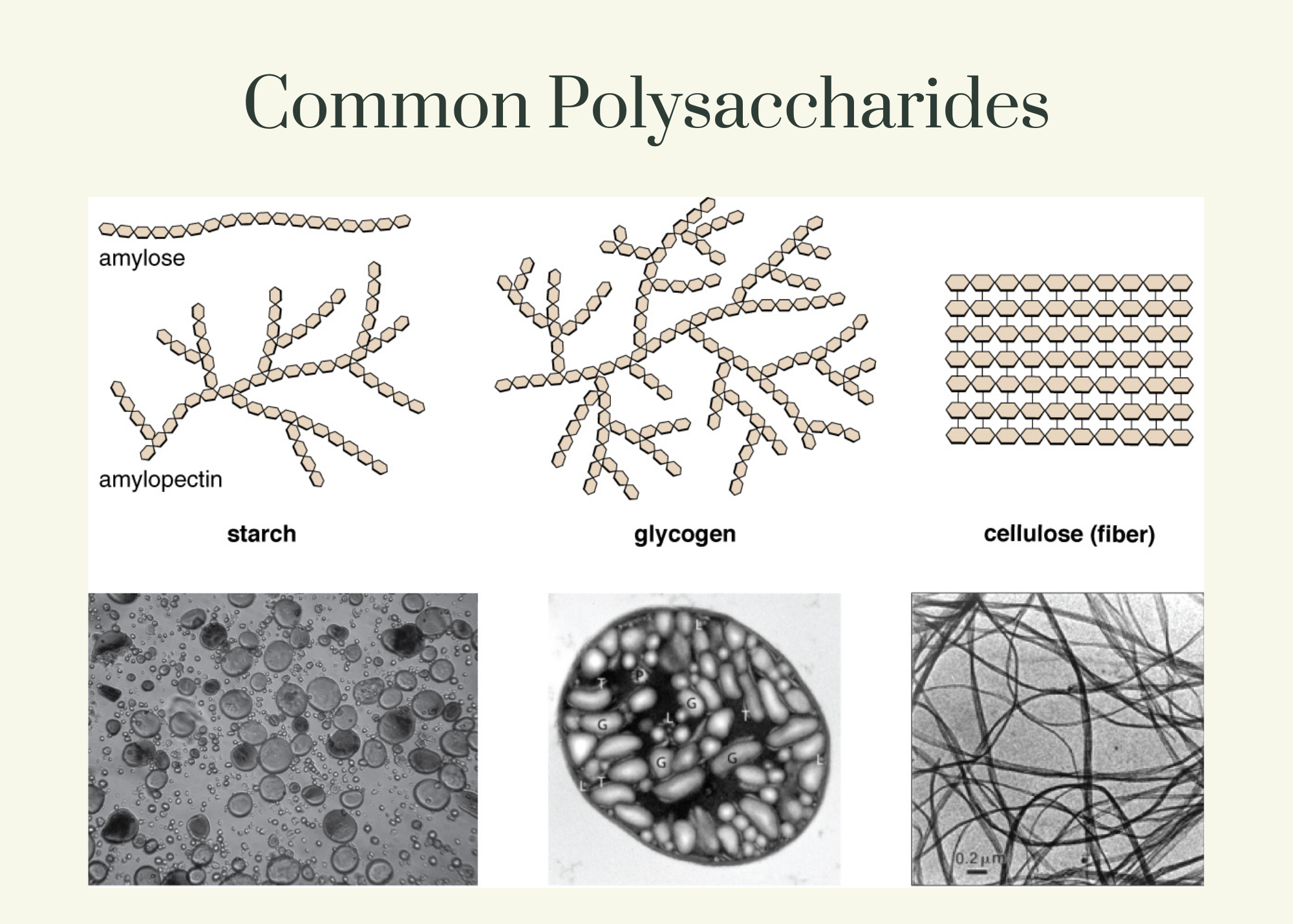What Are Carbohydrates and Why Are They Important?
Carbohydrates, like proteins, are essential macromolecules—large molecules that play crucial roles in the structure and function of all living things. The four major biological macromolecules are:
Carbohydrates (you’re here!)
Lipids (coming soon)
Nucleic acids (coming soon)
Carbohydrates are especially important because they are a primary source of energy. In fact, just reading this blog post requires energy, and carbohydrates are powering that process!
What Are Carbohydrates Made Of?
The name “carbohydrate” gives a clue about its composition: “carbo” refers to carbon, and “hydrate” refers to water (hydrogen and oxygen). All carbohydrates are made of carbon (C), hydrogen (H), and oxygen (O), typically in a 1:2:1 ratio. For example, the chemical formula for glucose—a common sugar—is C₆H₁₂O₆.
Like other macromolecules, carbohydrates are made up of smaller building blocks called monomers. The monomer of a carbohydrate is called a monosaccharide, or “simple sugar.”
Mono = one
Saccharide = sugar
These monosaccharides can exist as ring-shaped or chain-shaped molecules. The shape affects how they function, just like in proteins.
Some common monosaccharides include:
Glucose: the main sugar used in cellular respiration
Fructose: found in fruits
Galactose: found in milk
From Simple to Complex: Disaccharides and Polysaccharides
When two monosaccharides bond together, they form a disaccharide through a dehydration reaction, which removes a water molecule. This bond is called a glycosidic bond.
Examples of disaccharides:
Lactose = glucose + galactose (found in milk)
Sucrose = glucose + fructose (table sugar)
When many monosaccharides link together, they form polysaccharides—complex carbohydrates. These do not always consist of identical sugars; they can vary in length and composition.
Common polysaccharides include:
Starch
Glycogen
Cellulose
Chitin
What Do Carbohydrates Do?
Carbohydrates serve different functions in plants and animals. Let’s explore the major polysaccharides and their roles.
Starch – Energy Storage in Plants
Plants store excess glucose by linking glucose monomers into long chains called starch. Starch serves as an energy reserve, especially important for germinating seeds. When we eat starchy foods (like potatoes or rice), we access this stored plant energy.
Glycogen – Energy Storage in Animals
Animals, including humans, store extra glucose as glycogen, mainly in the liver and muscles. If your blood sugar drops, your body breaks down glycogen into glucose to maintain energy levels.
Important Note: While starch is mostly a straight chain, glycogen has a highly branched structure, allowing for faster energy release.
Cellulose – Structural Support in Plants
Cellulose is made of glucose too, but every other glucose molecule is flipped, giving it a rigid structure. This makes it perfect for plant cell walls, providing strength and support.
Humans can't digest cellulose, but it plays a key role in our diet as fiber!
Chitin – Structural Support in Fungi and Arthropods
Chitin is another structural polysaccharide, found in:
The exoskeletons of arthropods (like crabs and insects)
The cell walls of fungi
Chitin is made of modified glucose molecules and is tough and flexible, and that makes it perfect for protection and support.
Edited image from OpenStax. (2025). Figure 7.2.4: Starch, glycogen, and cellulose are three of the most important polysaccharides. In Microbiology (7.2: Carbohydrates). LibreTexts. CC BY 4.0.
Why Carbohydrates Matter
Carbohydrates are one of the most important sources of fuel for life. They help:
Power cellular activities
Store energy for later use
Provide structural support in both plants and animals
Whether you're eating fruit, running a race, or growing a tree, carbohydrates are involved. They are one of the four biological macromolecules—alongside proteins, lipids, and nucleic acids—and are essential to all forms of life.





